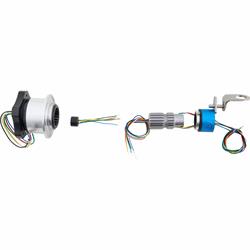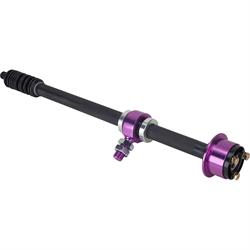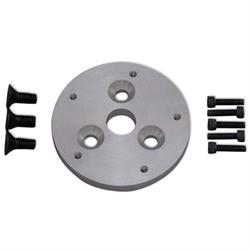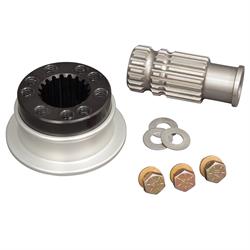How Do Quick Release Steering Wheels Work | All QR Hub Types
How Does Quick Release Steering Wheel Work
Let’s start by addressing exactly what is a quick release steering wheel. A quick release steering wheel is a steering wheel hub assembly that allows the wheel to be removed from the steering column and then reinstalled quickly and easily. Quick release steering wheels are widely used in racing where the tight confines of the racecar, often made worse with the addition of roll cages and containment seats, can make it difficult to enter and exit the car. This can become a safety concern when quick exit is necessary, such as after a crash or in case of a fire. Quick release wheels also facilitate quick changes to different size or shape steering wheels to tailor the car to the track or driver preference.
How do quick release steering wheels work? A steering wheel quick release kit is quite simple. There is a splined or hex-shaped sleeve that is adapted to the steering shaft that extends through the column to the steering box or rack. The steering wheel quick release hub engages the splines or hex with a corresponding female assembly that incorporates some sort of pin or spring-loaded bearings to lock it onto the sleeve. Then, the steering wheel is bolted to the hub. Depending on the design, removing the steering wheel is as simple as pulling a pin or lifting a collar.
Are Quick Release Steering Wheels Safe
There are several factors to discuss when considering the question “are quick release steering wheels dangerous?” First, it is unlikely that the wheel is going to fly off in your hands on the way into turn one (or the grocery store parking lot). That said, ask just about any professional driver and they will tell you that one of their pre-race checks is a quick tug on the wheel to make sure the quick release is locked in. There’s a reason that most stock steering wheels are pressed onto a taper. This press fit offers one more layer of redundancy to the design that helps keep the wheel in place and engaged in the splines, even if the retaining nut comes loose. Quick releases eliminate that safety factor, so they need to be checked.
Another thing to consider when looking at a quick release steering wheel for the street is the elimination of the factory airbag. While not an issue on old cars, modern cars are designed with that airbag as a crucial safety device. There’s no way to run an airbag with a quick release, so this will affect the safety and legality of a late model car. While most cars equipped with a quick release steering wheel will also have added safety equipment like a five point seat belt harness and a roll cage, it’s still important to carefully consider the wisdom of eliminating the factory airbag.
Are Quick Release Steering Wheels Legal
The bottom line for legality of any modification comes down to local and state laws. What’s legal or not widely enforced in one place will be a hot button issue in another. So, the right answer to the question “is it legal to have a quick release steering wheel” in your car will have to be answered by the local authorities. However, there are some specific things to consider when determining legality as well as safety and practicality in a street car. Also note that certain race sanctioning bodies will require quick releases to carry an SFI certification, so be sure to check the rulebook before installing a quick release hub in your race car.
Aside from the general safety concerns of the quick release design and the airbag issue that we discussed above, another important safety factor in determining are quick release steering wheels illegal is the horn. Do quick release steering wheels have horns? Typically, the answer is no. Though they are often required by state safety inspections, a horn is almost always ditched when a quick release wheel is installed. The historic alternative is a quick release wheel with a coiled cable, similar to what your grandma had on her landline telephone, to make the necessary connections to the wheel, especially on a drag racing steering wheel where additional functions are often used to cut reactions times. Fortunately, there’s a solution to this less than desirable situation. The Speedway Motors Racing Quick Release Steering Wheel Hub Kit for Button Wires uses integrated wiring to allow a custom horn button on the wheel to connect to the car without the “phone cord.” That means that you can keep the horn button on the wheel where it belongs, along with buttons for other specific drag racing quick release steering wheel functions like a transbrake, line lock, or nitrous.
What is The Purpose of a Quick Release Steering Wheel
The main reason quick release steering wheels are fitted to race cars has to do with the space issue. Some low, compact race cars are already hard to get in and out of. Add a cage with door bars, a racing seat with big bolsters, a halo, and a racing harness and it can be downright difficult for even the most nimble driver to squeeze in and out. This is inconvenient as well as dangerous if you need to get out in a hurry. A quick release racing steering wheel can free up a lot of room to allow for easier entry and exit.
Also, consider that the pedals, shifter, and steering wheel are the points of connection between the driver and the car. In a racecar, having the feel of these interfaces exactly how you like them can be critical when races are decided by a thousandth of a second. So, another handy use for a quick release hub is that it can permit fine tuning by allowing different custom steering wheels to be easily fit to the same car. Or, for the same car to be tailored to multiple drivers. Also worth noting, some proponents of quick release hubs in street cars advocate for the anti-theft component. The idea here is that it’s hard to drive off in a car that has no steering wheel. This is true, as long as you’re willing to carry your steering wheel with you into the restaurant or shopping mall.
What Do You Need for a Quick Release Steering Wheel
Most typically, a steering wheel quick release kit will include the sleeve that adapts to the existing steering shaft as well as the hub and pin or other retention device. Usually, this is all you need provided you have a way to adapt the sleeve to the car and have a steering wheel with the same bolt pattern as the hub face.
The most difficult part of the install will be the adaptation of the splined or hex sleeve to the steering shaft. Typically, the sleeve will have a machined recess in the end that faces the front of the car and is designed to slip over the existing steering shaft. Are quick release steering wheels universal? With enough fabrication, this design can be adapted to just about anything, though it will be much more difficult in some applications than in others. It’s common to see a ¾” I.D. on the adapter sleeve to accommodate the typical ¾” round or DD steering shaft. Some quick releases bolt on to the existing steering hub. In either case, it’s critical that the splined adapter is securely attached to the steering shaft. This is the link between the driver and the front wheels. If you’re using a weld on steering wheel quick release sleeve and in doubt of your welding chops, have this part done by a professional.
Another option is to start with a dedicated steering column designed for a quick release. Speedway Motors sells a universal hot rod column that comes with a steering wheel quick release hub already installed. Likewise for racing, consider a collapsible racing column for an added measure of safety. Also, replacing the existing stock column with a purpose-built racing column will likely shed some weight.
Consider the various types of quick releases when deciding what’s right for your car. First, do you want a hex or splined hub? Both offer a positive connection, but with a hex, the wheel can only go on in one of six orientations. A splined adapter, on the other hand, offers as many different orientation possibilities as there are splines. This can be a positive or a negative depending on the car type and driver preference. Second, what type of retention method to you prefer? It’s common for quick releases to use a pin to lock them in place. That pin can be removed in some designs, but often is spring-loaded and retained by the hub so that it can’t get lost. Another design is the “rim-style” quick release, which uses a spring-loaded collar to lock the hub. This style is generally the most intuitive and doesn’t require hunting for the pin location in an emergency when every second counts.
Also, don’t forget to match up the bolt pattern in the hub with the steering wheel you want to run. The most common steering wheel bolt patters are 3-bolt on a 1.75” diameter, 5-bolt on a 2.75” diameter, and 6-bolt, also on a 2.75” diameter. Depending on the application, a steering wheel adapter may be available to make things more universal.
Steering wheel quick releases are an economical way to add ease of entry and exit to a race car. They can also serve as an adapter for steering wheels that allow ergonomics to be fine tuned to the driver and track conditions. When applied properly, quick releases can make a car safer for a driver to exit in an emergency, but other factors need to be considered before installing a quick release steering wheel in a car that will spend time on the street.









